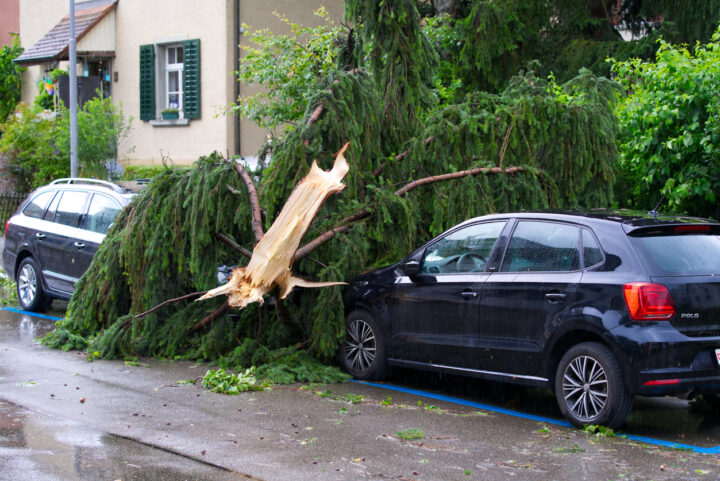Mark Roman | July 2, 2024 | news

Located on the humid east coast, Florida is no stranger to hurricanes, although the number varies annually. In 2023, 20 named storms, including 7 hurricanes (3 of them major), moved through the Atlantic Basin, with Hurricane Idalia striking the state. It was the fourth most active hurricane season since 1950.
While many homeowners carry hurricane insurance to safeguard their property investments, it won’t stop storms from striking. When they do, it’s important to understand the scope of the storm so you can react accordingly to protect yourself and your loved ones from harm. Here’s what you need to know about storm categories.
Hurricane Categories Explained
The five hurricane categories are intended to describe the strength of any given storm, primarily related to the scope of wind speeds and storm surges. These categories help people understand the damage that might be caused so they can properly prepare and protect themselves.
Category I
This is the mildest storm category, but that doesn’t mean you’re safe from property damage or the potential for automobile or maritime accidents. Category I storms are characterized by wind speeds of 74 to 95 mph and storm surges of 4 to 5 feet above normal tide levels.
Damage primarily impacts foliage (trees, shrubs, and the like), but there could also be damage to piers, unanchored mobile homes or other structures, and smaller moored watercraft.
Category II
Category II storms feature wind speeds of 96 to 110 mph and storm surges of 6 to 8 feet. This may result in fallen trees, roofing damage to structures, flooded marinas, and small, unprotected watercraft torn from moorings. Low-lying areas and shorelines may be subject to evacuation for this storm category.
Category III
When wind speeds reach 111 to 130 mph and storm surges are 9 to 12 feet above normal tide levels, the storm is listed as Category III. In addition to damages in the second category, structures may see damage to doors and windows, and mobile homes could be destroyed.
Beach erosion and battering waves that strike structures are likely. Early evacuation of low-lying areas is necessary, as rising water can block access to escape routes.
Category IV
In this category, wind speeds reach 131 to 155 mph, and storm surges are 13 to 17 feet. Such storms cause extensive damage to structures, possibly including complete roof failure. Structures within six miles of shoreline and/or those situated two feet or less above sea level may experience flooding on lower levels.
Category V
This is the most severe hurricane category, featuring wind speeds over 155 mph and storm surges greater than 18 feet above normal tide levels. In addition to the damage caused by lesser categories, this type of storm is likely to result in complete roof failure for residential, commercial, and industrial structures.
Such storms have the potential to cause complete building failure and even blow away smaller structures. Category V storms require massive evacuations of residents in low-lying areas. This could include areas within 5 to 10 miles of shorelines.
Keeping Your Family Safe
The place to start when it comes to hurricane safety is to understand the different categories and the damage they could cause. From there, you must pay attention to news broadcasts and follow instructions for your area. If an evacuation is called for, make sure you’re ready to go and have a planned escape route.
If you live in a low-lying area, you may even want to evacuate early to avoid traffic jams and potential car accidents that could slow your progress. Understanding the differences between storm categories, keeping an eye on storm tracking, and following directives regarding evacuations gives you the best chance to remain safe when hurricanes strike.
Contact the Personal Injury Law Firm of Roman Austin for Help Today
For more information, please contact the legal team of Roman Austin Car Accident and Personal Injury Lawyers for a free initial consultation with St. Petersburg injury lawyer. We have convenient locations in Florida: St. Petersburg, Safety Harbor, Clearwater, New Port Richey, and Tampa.
We serve throughout Pinellas County, Hillsborough County, Pasco County, and its surrounding areas:
Roman Austin Car Accident and Personal Injury Lawyers – Clearwater Office
1811 N. Belcher Road, Suite I-1
Clearwater, FL 33765
(727) 787-2500
Roman Austin Car Accident and Personal Injury Lawyers – Congress Ave Office
2360 Congress Avenue
Clearwater, FL 33763
(727) 591-5610
Roman Austin Car Accident and Personal Injury Lawyers – Tampa Office
6601 Memorial Hwy Suite 202
Tampa, FL 33615
(813) 686-7588
Roman Austin Car Accident and Personal Injury Lawyers – New Port Richey Office
2515 Seven Springs Blvd.
New Port Richey, FL, 34655
(727) 815-8442
Roman Austin Car Accident and Personal Injury Lawyers – St. Petersburg Law Office
840 Beach Dr NE Suite 202
St. Petersburg, FL 33701
(727) 787-2500
Roman Austin Car Accident and Personal Injury Lawyers – Safety Harbor Law Office
202 9th Ave S Suite A-2
Safety Harbor, FL 34695
(727) 787-2500

